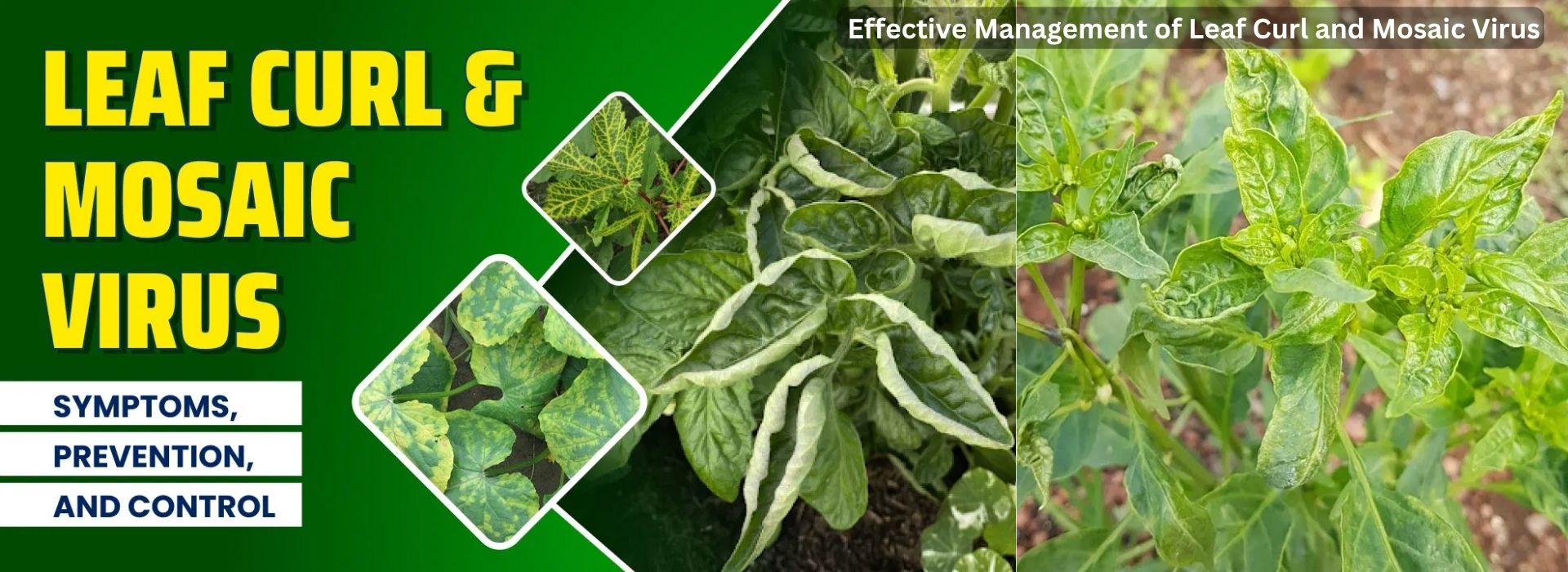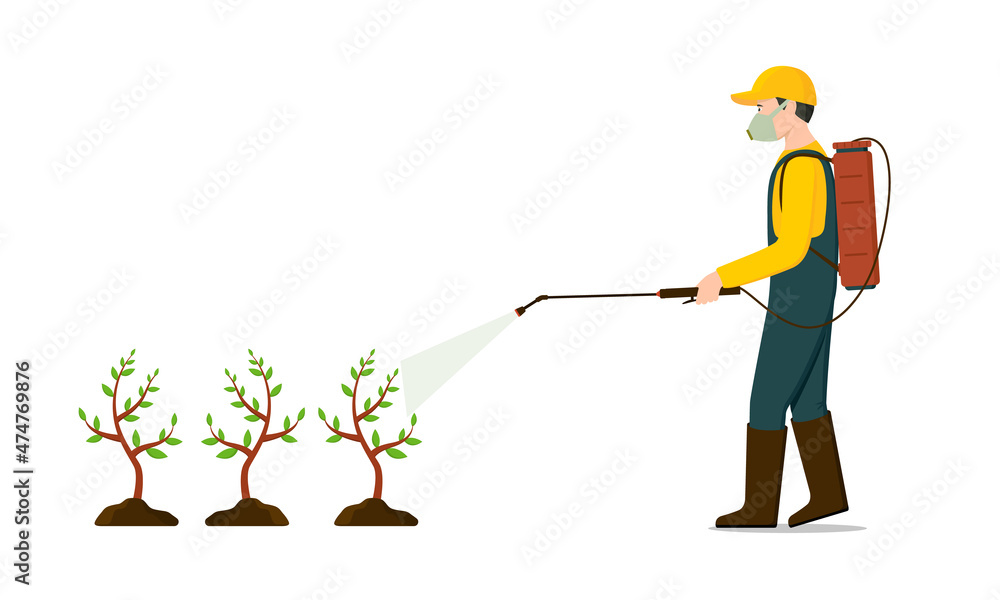Effective Management of Leaf Curl and Mosaic Virus: Symptoms, Prevention, and Control Strategies
June 20, 2025Effective Management of Leaf Curl and Mosaic Virus: Symptoms,
Prevention, and Control Strategies
The health and productivity of
crops are vital to sustainable agriculture, yet they are constantly threatened
by pests and diseases. One particularly destructive disease is the Leaf Curl
Virus, known for its ability to severely damage crops like tomatoes,
chilies, cotton, and bell peppers. Understanding the symptoms, preventive
techniques, and control strategies is crucial for farmers and gardeners aiming
to minimize its impact. This blog provides a comprehensive guide to managing
leaf curl virus effectively.
What Is Leaf Curl Virus?
Leaf Curl Virus is a plant
disease caused by a group of viruses, most commonly spread by sap-sucking
insects like whiteflies. The virus disrupts normal plant growth, leading
to deformed leaves, stunted growth, and reduced yields. It poses a significant
threat to both commercial agriculture and home gardens.
Key Symptoms of Leaf Curl Virus
Early identification of the
disease is critical for effective management. Common symptoms include:
- Leaf Curling and Twisting: One of the most
noticeable symptoms is the abnormal curling or crumpling of leaves.
- Yellowing of Leaves: Leaves often turn pale
or yellow, indicating a disruption in chlorophyll production.
- Stunted Plant Growth: Infected plants
typically exhibit slowed or halted growth due to impaired nutrient flow.
- Thickened or Brittle Leaves: Leaves may
become thicker and more brittle, making them more susceptible to further
stress.
- Poor Fruit Development: In fruit-bearing
crops, the virus can cause malformed or underdeveloped fruits,
significantly lowering market value.
Prevention Strategies
Preventing the spread of leaf
curl virus is more effective than trying to cure it. Here are essential
practices to keep your crops virus-free:
- Use Virus-Free Seeds and Transplants
Begin with certified, disease-free seeds or seedlings to prevent introducing the virus into your field or garden. - Grow Resistant Varieties
Many agricultural research institutions and seed companies offer virus-resistant plant varieties. Investing in these can drastically reduce the risk of infection. - Practice Crop Rotation
Avoid planting susceptible crops in the same location year after year. Crop rotation helps break the virus lifecycle and reduces pest buildup. - Control Whiteflies
Since whiteflies are the primary vectors, controlling their population is crucial. Use yellow sticky traps, neem oil sprays, and encourage natural predators like ladybugs and lacewings. - Maintain Field Hygiene
Remove and destroy any infected plants and weeds that can harbor whiteflies or the virus. Always clean tools and hands when moving between plants.
Control Strategies for Infected Plants
Once the virus has taken hold,
focus shifts to limiting damage and preventing further spread:
- Remove Affected Plants Early
If symptoms are spotted early and isolated to a few plants, remove and dispose of them away from the garden or field to limit transmission. - Use Organic Insecticides
Sprays made from neem oil or insecticidal soap can reduce whitefly numbers without harming beneficial insects. - Introduce Biological Controls
Releasing beneficial insects such as Encarsia formosa (a parasitic wasp) can naturally reduce whitefly populations, helping control the spread. - Install Reflective Mulch
Reflective or silver-colored mulch deters whiteflies from landing on plants, reducing virus transmission. - Monitor and Act Quickly
Frequent inspection of your plants allows for early detection and swift response, minimizing potential damage.
Integrated Pest and Disease Management (IPDM)
For long-term success, integrate
multiple strategies into a cohesive management plan:
- Combine resistant crop varieties, biological
controls, and cultural practices.
- Keep records of pest populations and plant health.
- Train farm workers on hygiene and detection
techniques.
- Collaborate with local agricultural extension
services for updated virus-resistant seeds and treatment solutions.
Conclusion
Managing Leaf Curl Virus requires
a proactive, multi-faceted approach. Early diagnosis, preventive action, and
integrated control strategies can significantly reduce the risk and impact of
this disease. Whether you are a commercial farmer or a home gardener, adopting
sustainable and informed practices will help protect your crops from leaf curl
virus and ensure a healthier, more productive yield.
At krishibazaar.in, you
can find and buy various agricultural products. For agricultural guidance on
selecting the most suitable products for your crops, please contact or WhatsApp
at +917887880887.






Guest reviews
No reviews found for this Blog